Roof architecture is a pivotal aspect of any building’s design, influencing not just the aesthetic appeal but also the structural integrity. Roofs do more than just protect a building from the elements; they define its character, contribute to its energy efficiency, and can even offer additional living or utility space. Below, we explore various types of roofs, their architectural nuances, benefits, and considerations.
1. Flat Roofs
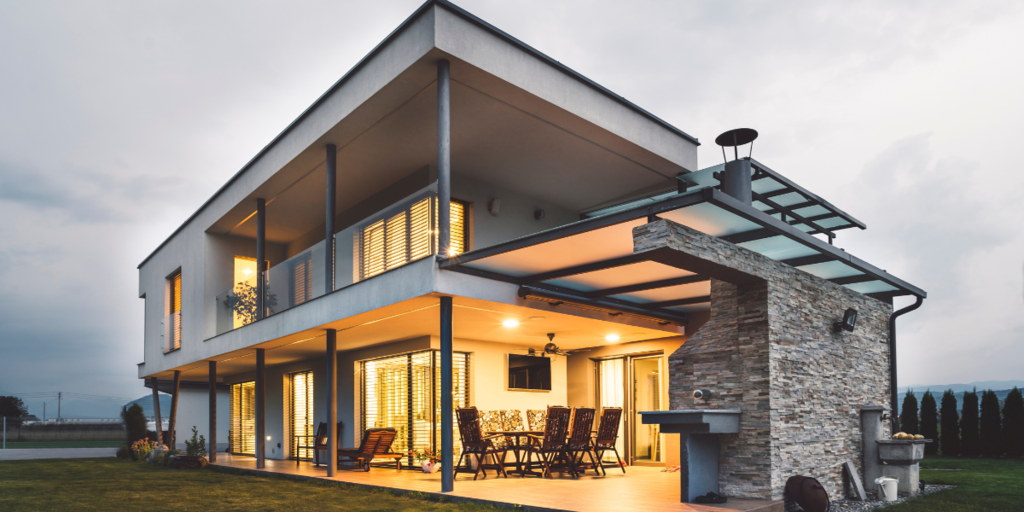
Traditionally associated with commercial and industrial buildings, flat roofs have found their place in residential architecture, particularly within the modernist movement. While found everywhere, flat roof design has grown popular in warmer or seasonally warm climates where the roof space can be utilized as a garden or a leisure area. Depending on the floor plan, this additional area can double your usable space, enhancing the property in many ways!
With relatively lower cost and ease of construction for large buildings, flat roofs are an appealing choice, yet they may require more maintenance and have a shorter lifespan compared to more sloped designs. Despite their name, flat roofs (are supposed to) possess a slight slope to facilitate water drainage. However, installation errors, foundation shifts, and general settling over many years can make that slope closer to level. If that slope is reduced enough you can develop drainage issues and be susceptible to leaks due to pooling water.
2. Single Pitch (Skillion) Roofs
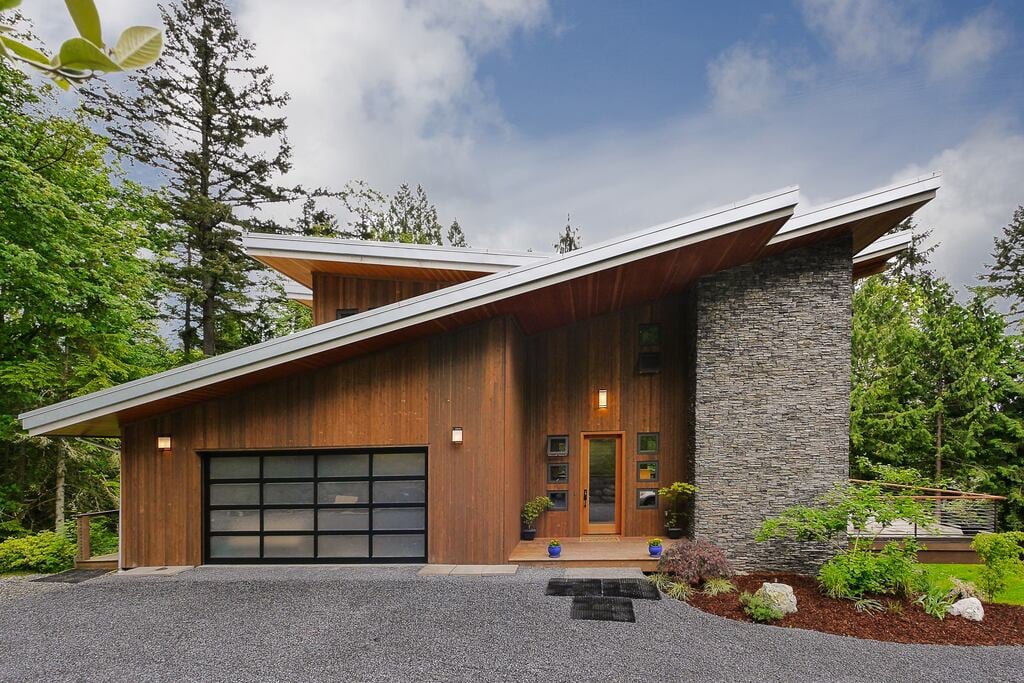
The single pitch or “Skillion roof” is a simple yet striking design. Characterized by a single sloped surface, it resembles half of a traditional gabled roof (more details below), giving a contemporary, angular appearance to buildings. Skillion roofs tend to produce ideal water drainage since there are no nooks and crannies for water to pool. These also provide an ideal surface for solar panel installation, aligning with growing environmental sustainability trends.
While this style is generally liked, the steep vertical face off the skillion roof can make it vulnerable to wind damage, so if you live in an area prone to strong gusts maybe reconsider. Also, having this large of a sloped roof typically limits second-floor interior height and space, which might be a drawback for some homeowners.
3. Gabled Roofs
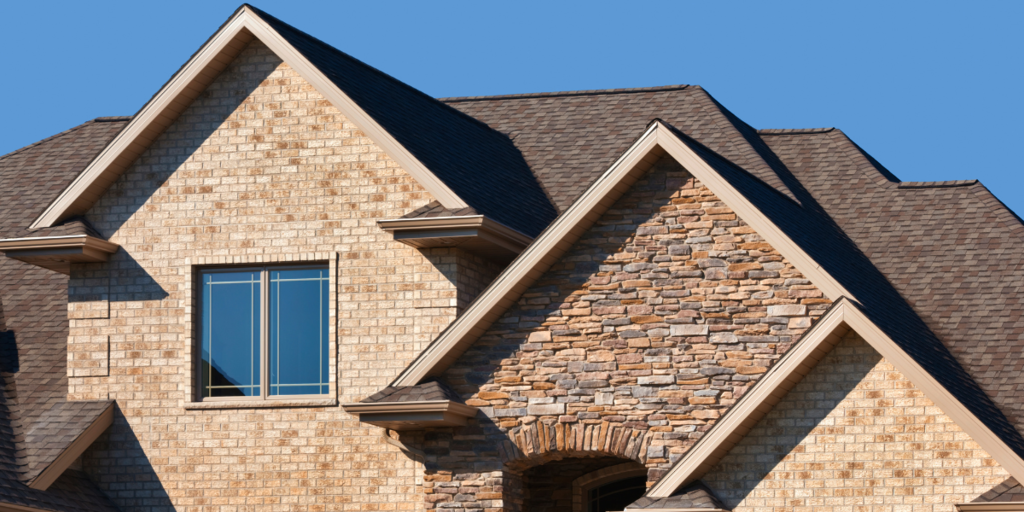
The gable roof is the most common of roof shape. Sparking memories of a child’s “house” drawing, these roofs are a popular and economical design. Gabled roofs are made from two slopes that together form a triangular shape with at least one flat end called a “gable.” This triangular end is not composed of roof materials. Instead, it is made of siding, stone, or whatever materials are used on the rest of the home’s exterior.
These types of roofs have one, two, or many more gables. Houses can be front-gabled, meaning the gable faces the street (such as the image below), or side-gabled when the gutter and the ridge of the gable are parallel with the street. Because they’re so versatile, it’s led to their widespread use and popularity.
The biggest challenge with gabled roofs is when builders go crazy and create too many valleys and pockets on the roof. Not only does this increase building costs, but it complicates your drainage and they create pockets of shade that don’t catch sunlight in winter. This is made even worse if north-facing. That often leads to homes retaining ice and snow in the winter months which can lead to needing emergency ice dam removal services.
4. Hip Roofs

Hip roofs feature slopes on all four sides that converge along a line at the top of the roof, creating a stable structure with aesthetically pleasing lines. This design is prevalent in both residential and commercial architecture, known for its durability and resistance to high winds. For those areas with little to no wind, hip roofs can be enhanced with gabled dormers or crow’s nests to add architectural interest and let in more natural light.
These Types of roofs offer great stability and aesthetic appeal, hip roofs are more complex and costly to construct than gable roofs, but their distinctive appearance and performance in windy conditions often justify the investment.
5. Pyramid Roofs
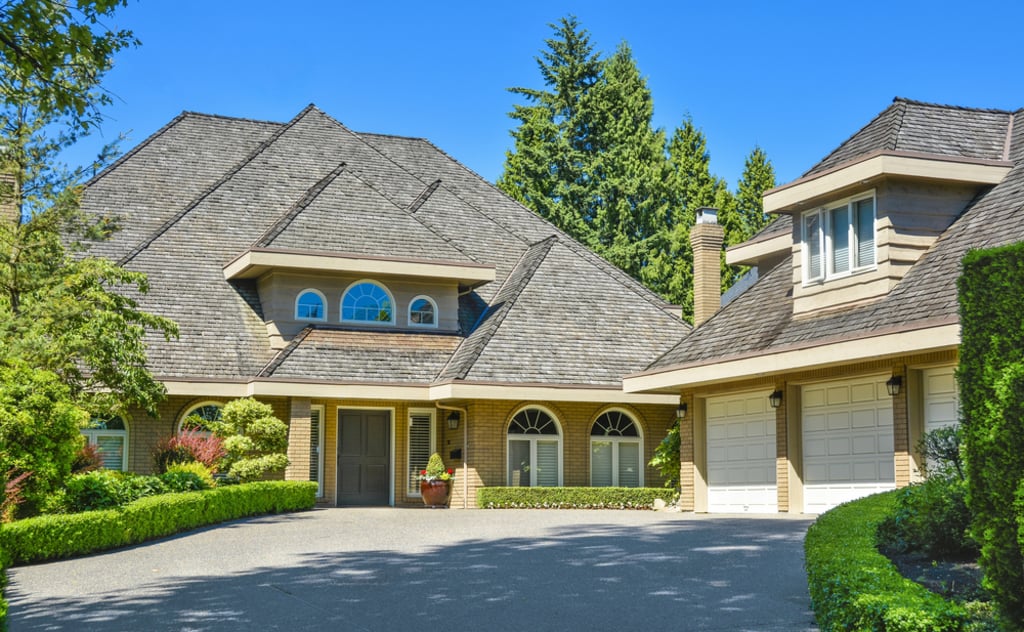
A specialized version of the hip roof, pyramid roofs are characterized by four triangular sides that converge to a single point. This design is most commonly applied to smaller structures, such as gazebos or pool houses, where its symmetrical shape can create a dramatic focal point. Pyramid roofs are highly resistant to wind and weather, making them a durable choice. However, like hip roofs, their complexity and the materials required for their construction can make them more expensive with reduced attic space.
6. Mansard Roofs
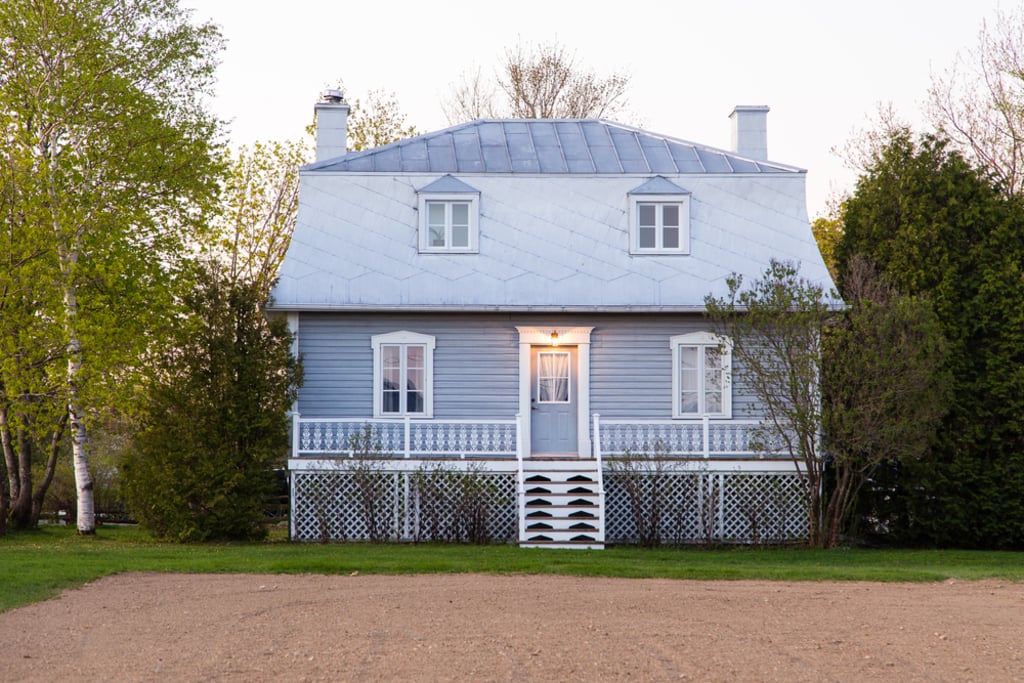
The mansard roof, with its dual-sloped sides, offers both an elegant profile and practical advantages. If you think of a traditional manor or French estate, that’s likely a mansard roof. And for good reason, as mansard roofs allow for increased interior space by using the attic space for additional living areas or bedrooms. This French-inspired design allows for flexibility in the use of the roof space, with the lower slope often punctuated by dormer windows to introduce natural light and ventilation.
While mansard roofs can add significant value and charm to a property, they are among the more expensive roofing options due to their intricate design and the high level of craftsmanship required for their construction. Also, if you opt for a flat-top mansard roof, you can experience some drainage issues, which is why we tend to recommend a dual-slope variant that promotes proper drainage.
7. Curved Roofs

Curved roofs stand out for their modern and dynamic shapes, offering architects and builders the opportunity to create structures with unique visual appeal and enhanced aerodynamics. This type of roof is particularly suited to buildings that aim to make a contemporary architectural statement or require special functional considerations, such as resistance to extreme weather. What kind of extreme weather? Gale Force winds and higher, blizzards with feet of snow, and even seismic activity. They’re resilient, but the awkward shape can make them impractical. Not to mention that the construction of curved roofs involves specialized techniques, materials, and tradesmen, which increases the overall Roofing cost and complexity of a building project.
Final Words
Each roof design brings with it a unique set of characteristics, advantages, and considerations. From the traditional charm of gabled and mansard roofs to the modern appeal of flat and curved designs, the choice of roof type is a critical decision in the architectural process. It influences not only the appearance but also the functionality, energy efficiency, and comfort of a building. As such, selecting the right types of roof requires a careful balance of aesthetic preferences, practical requirements, and environmental conditions, ensuring that the final structure stands both the test of time and the scrutiny of discerning eyes.
Read More :

